
Business
10:48, 10-Feb-2018
Spring Festival shopping spree: A look at Spring Festival spending
By Cao Qingqing
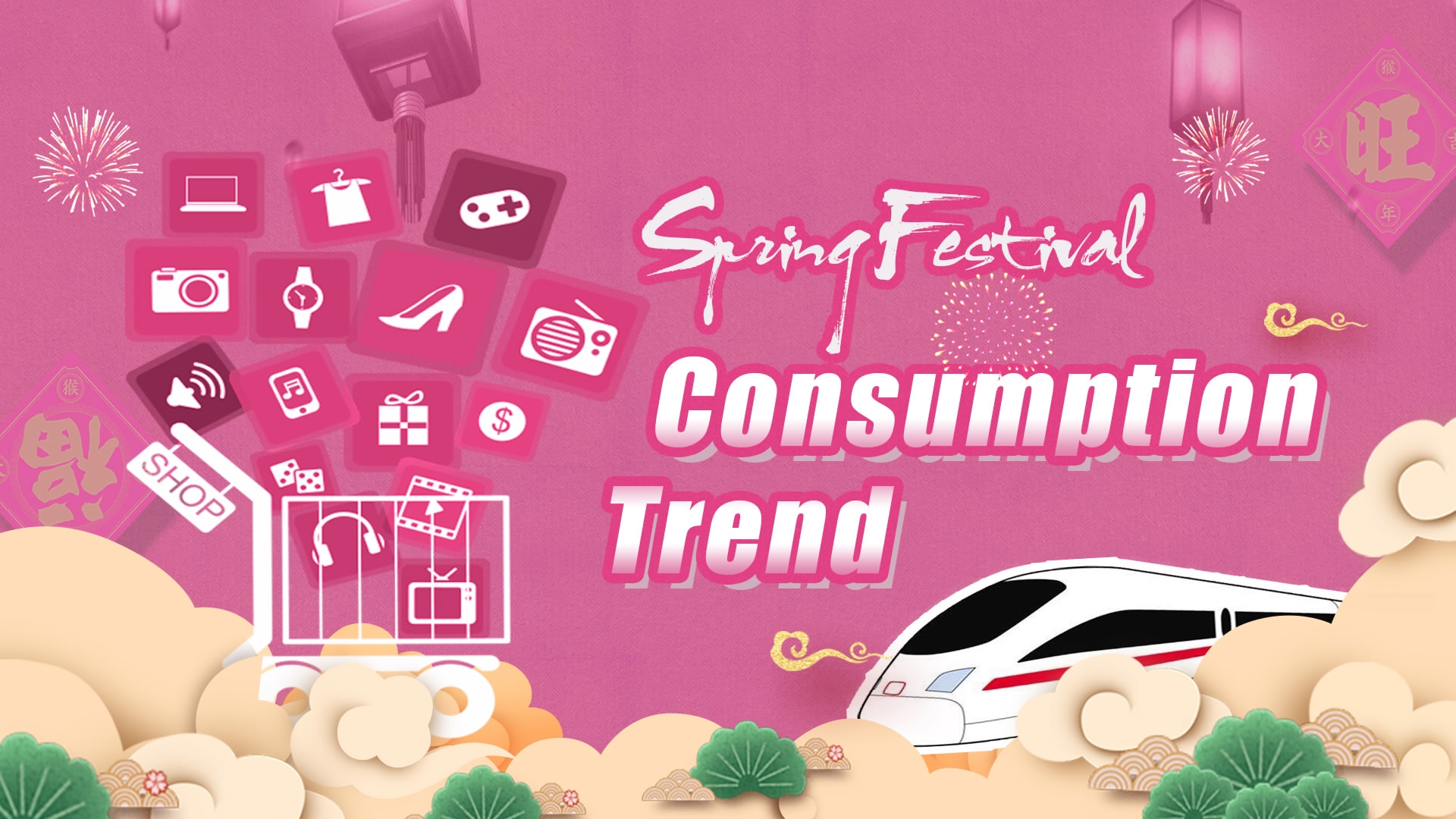
The Spring Festival, or the Chinese New Year, is one of the most important festivals of the year – if not the most important for people in China. The holiday is a time for leisure, spending time with family and rewarding themselves for a year of hard work. And for some, this reward means buying something normally considered extravagant.
Data from China’s Ministry of Commerce (MOFCOM) showed that spending during the week-long Spring Festival holiday has expanded at a rate of double digits in the past five years.
And the momentum is expected to continue. Vice Minister of Commerce Wang Bingnan predicted that spending for the upcoming Spring Festival could reach 900 billion yuan, or 143 billion US dollars.
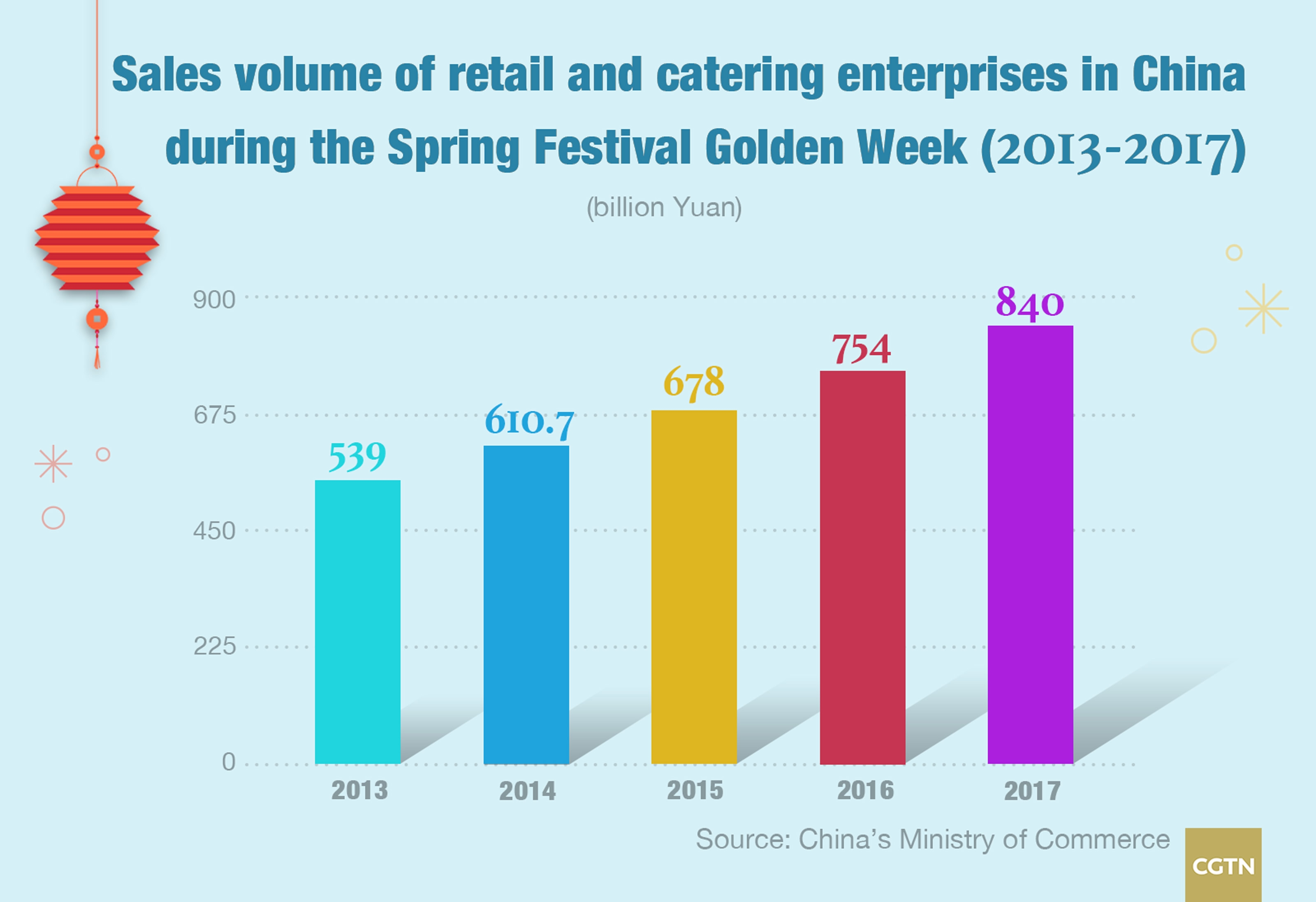
CGTN Photo
CGTN Photo
So how is the money being spent? According to data from MOFCOM, tourism and the food and beverage sectors account for most the spending. The tradition of shopping for festive goods, including food (called "Ban Nianhuo" in Chinese), has long been a tradition in China.
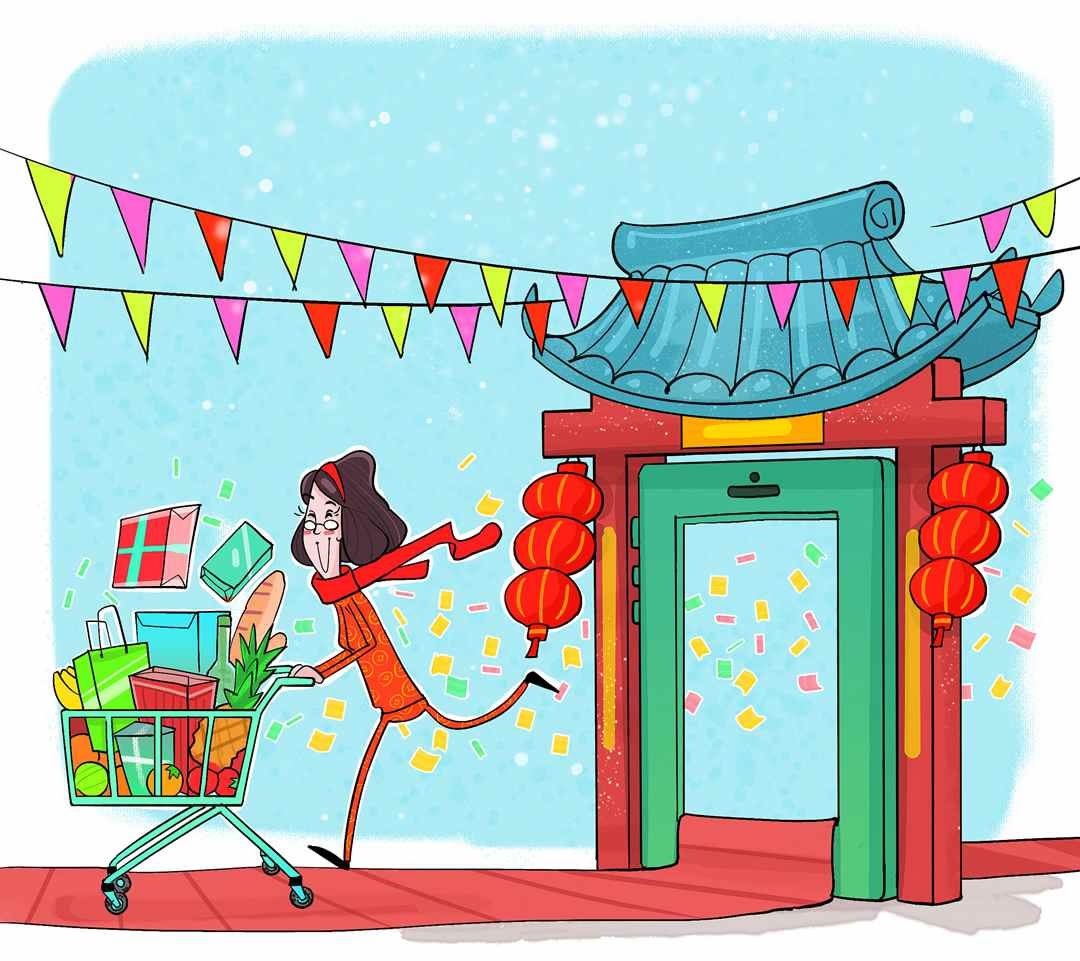
VCG Photo
VCG Photo
The convenience, price advantage and huge selection on online platforms like Taobao and JD.com have transformed how people shop during this time of year. Instead of going to supermarkets, people are making purchases online and the sites are taking advantage by running special promotions.
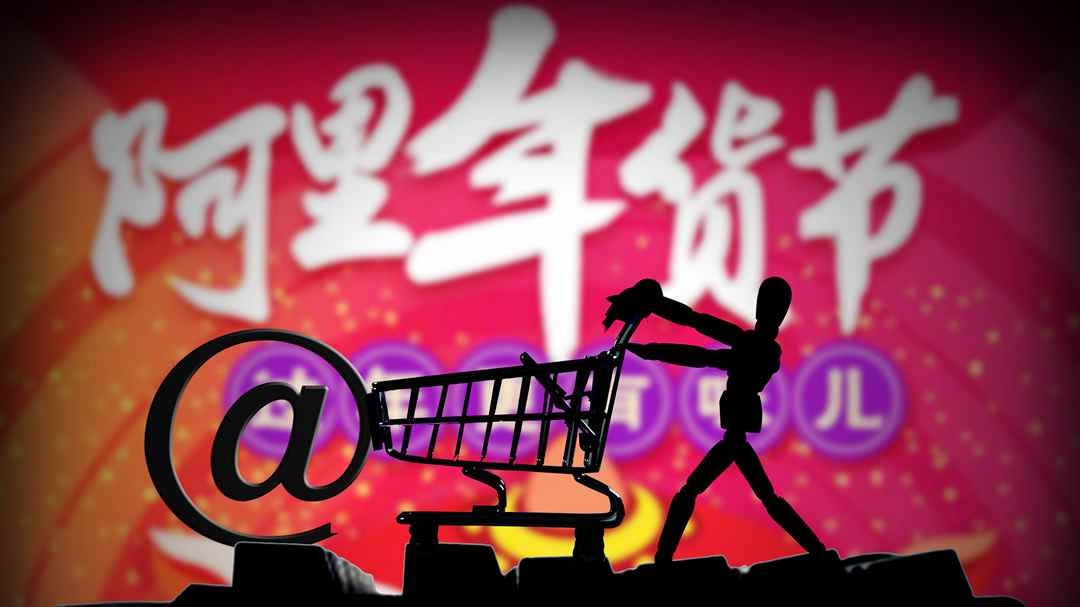
VCG Photo
VCG Photo
Data from Alibaba shows that clothes, food and home appliances have been the best-selling categories three years in a row. During the 2016 Spring Festival season, a total of 2.1 billion items were sold on Alibaba during its five-day promotion period, the equivalent of every person in the country buying 1.5 items.
Tourism has also been booming and has grown into another pillar sector where people spend their money during the holiday. In fact, the week of the Spring Festival has gradually become one of the most popular weeks of the year for domestic and international travel. In the last five years, the industry has seen a rapid revenue increase for this "Golden Week."
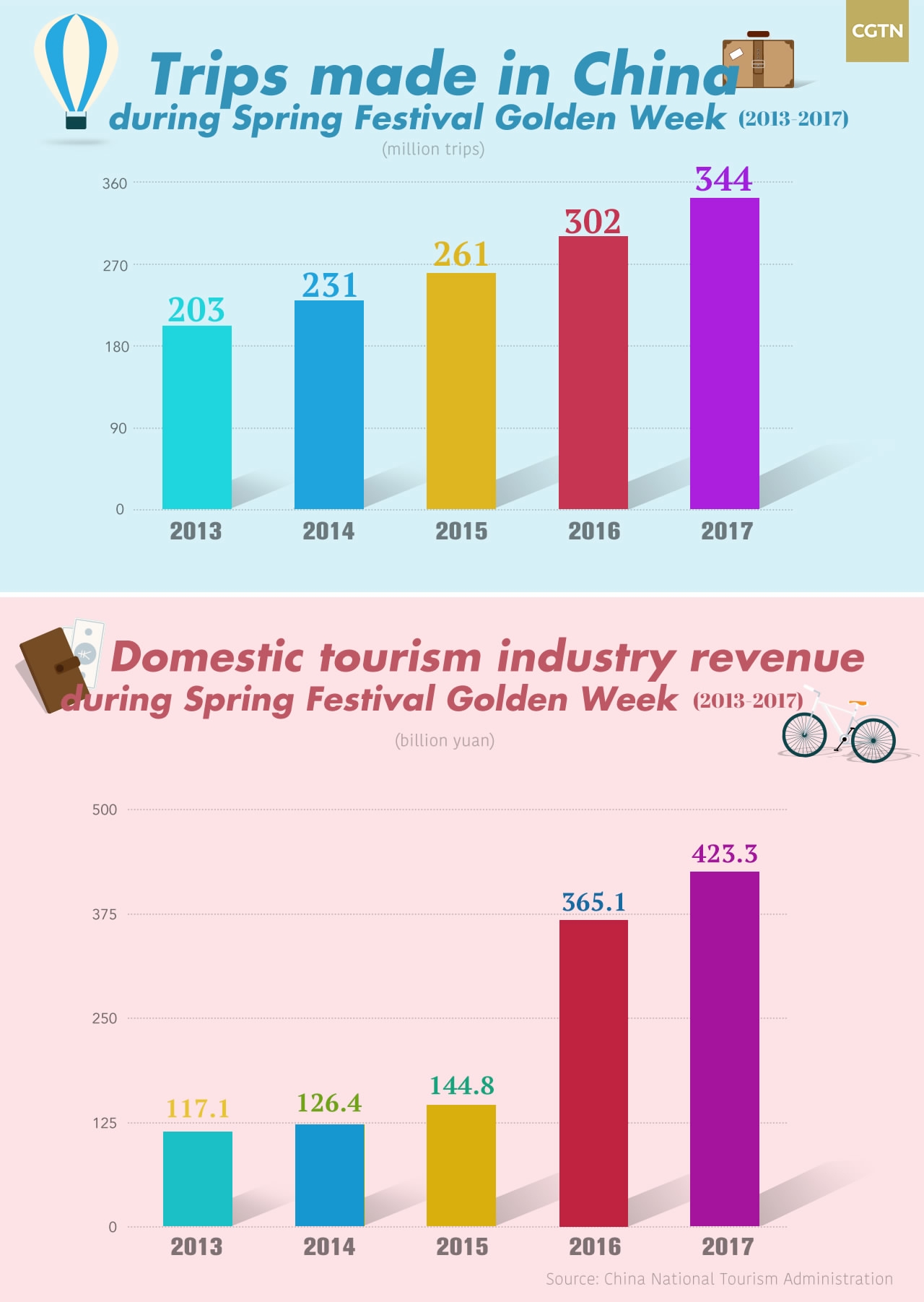
CGTN Photo
CGTN Photo
Another highlight that emerged in the past couple years is the trend of sending virtual red envelopes through WeChat, China’s largest social media platform. The concept was introduced in 2014 and quickly gained popularity.
Linked to the individual's bank account, users can send money via the virtual red envelopes to anyone on WeChat. In the past three years, the number of virtual red envelopes sent during the Spring Festival holiday surged from 3.21 billion to 46 billion.
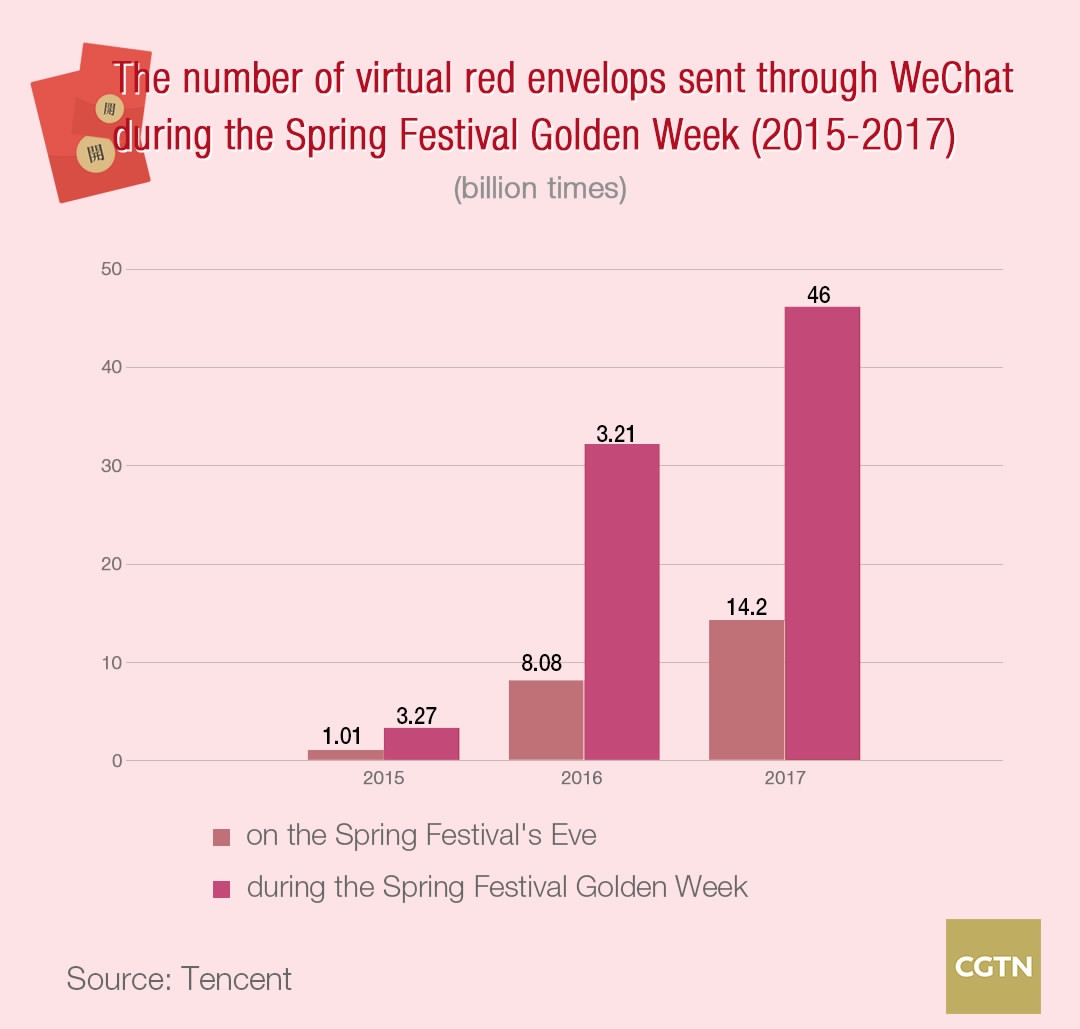
CGTN Photo
CGTN Photo
With large populations, many of China's first-tier cities – Beijing, Shanghai, Shenzhen and Guangzhou – use the red envelope feature the most. In terms of provinces, Guangdong Province in southeast China has topped the list for three consecutive years, with 348 million being sent on Chinese New Year's eve in 2017.
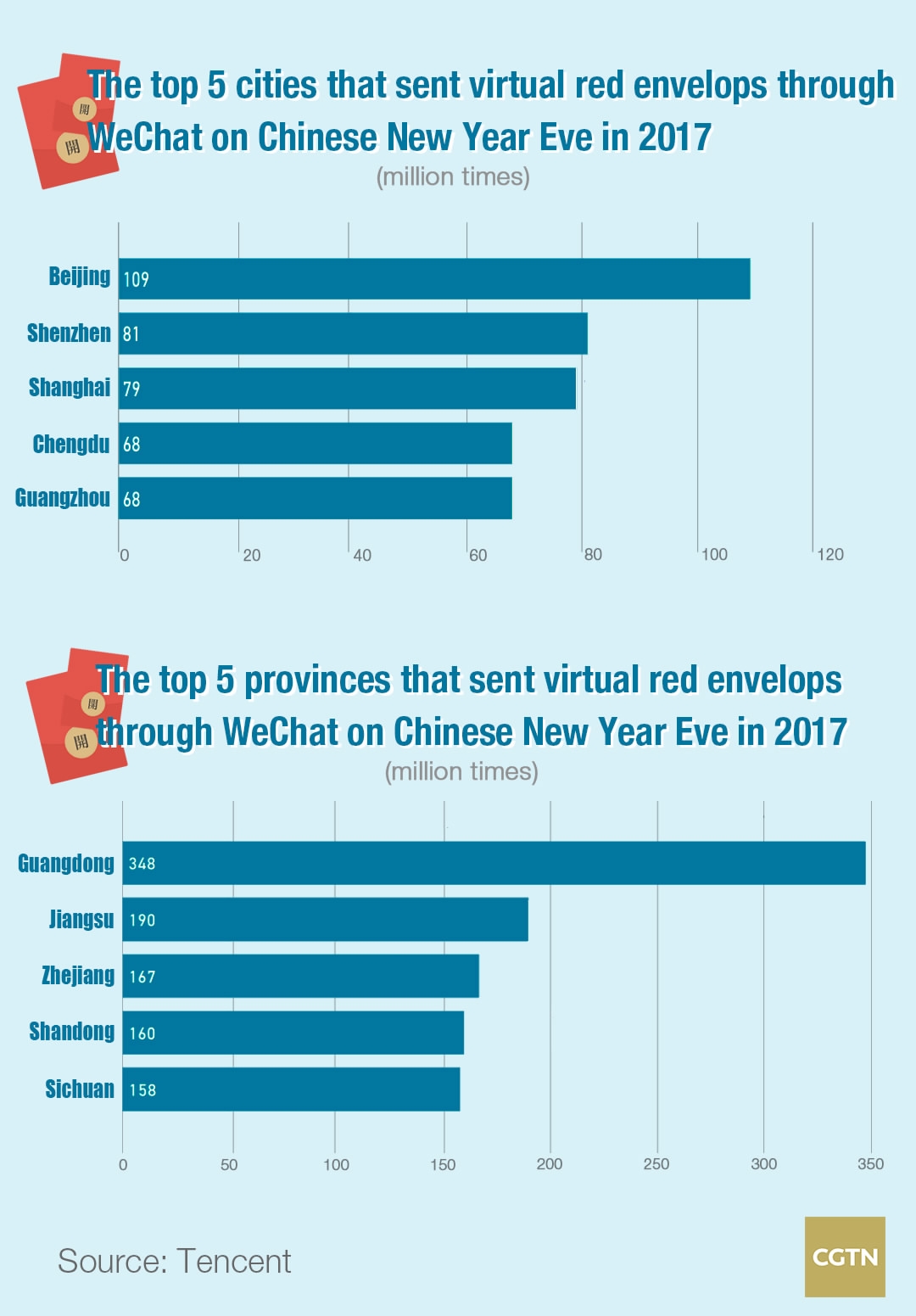
CGTN Photo
CGTN Photo

SITEMAP
Copyright © 2018 CGTN. Beijing ICP prepared NO.16065310-3
Copyright © 2018 CGTN. Beijing ICP prepared NO.16065310-3